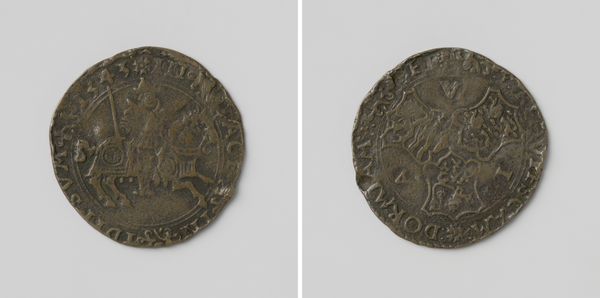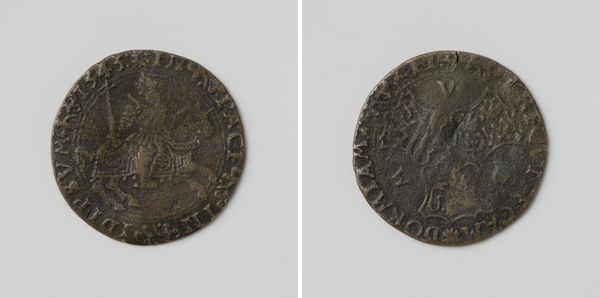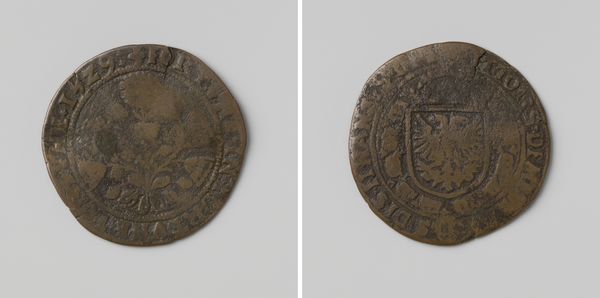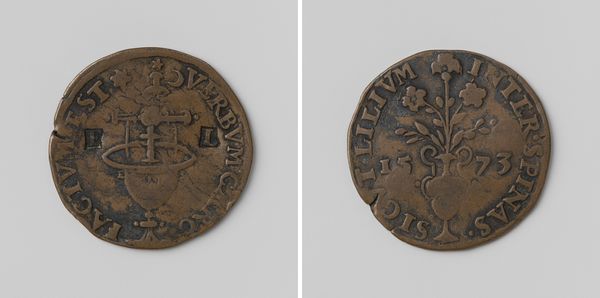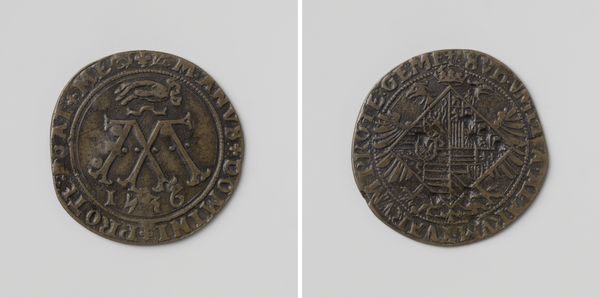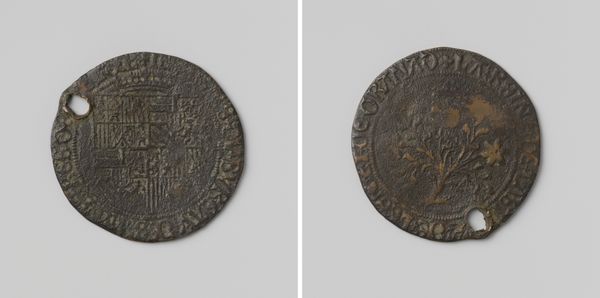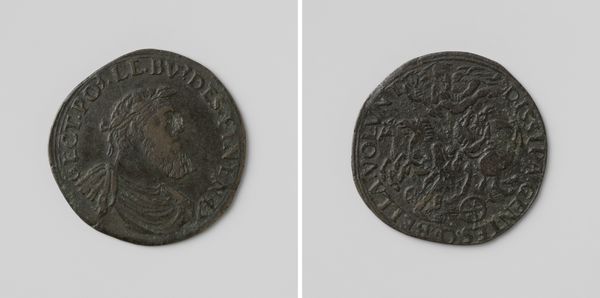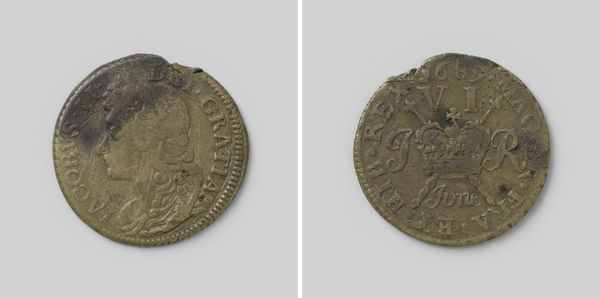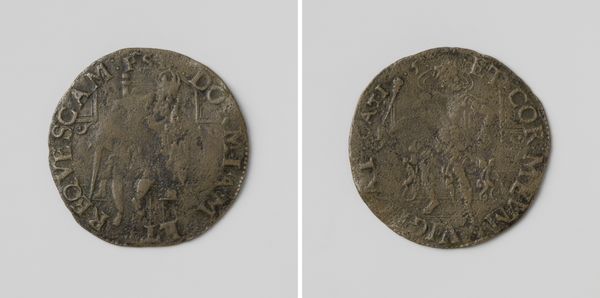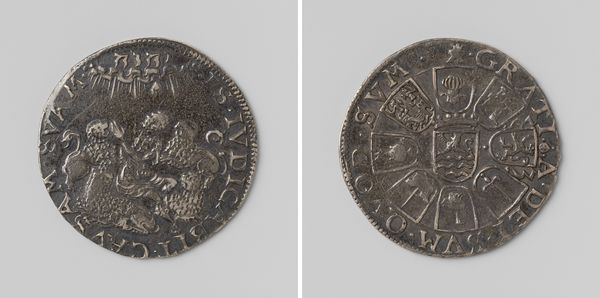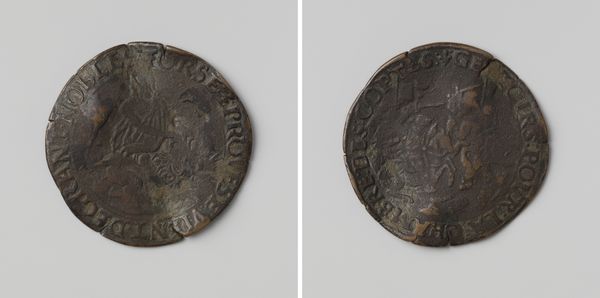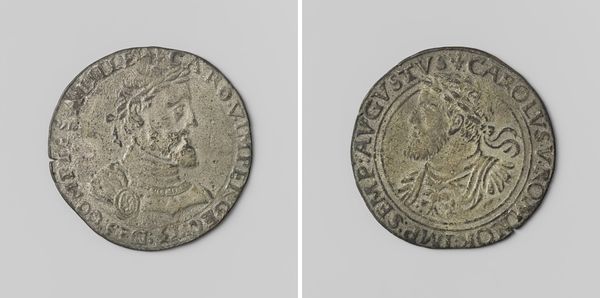
Aansporing van Karel V, Duits keizer, om de rust te bewaren, rekenpenning van raad van Financiën 1546
0:00
0:00
metal, relief
#
portrait
#
metal
#
relief
#
ancient-mediterranean
#
history-painting
Dimensions: diameter 2.7 cm, weight 4.23 gr
Copyright: Rijks Museum: Open Domain
This is a bronze medal depicting Charles V, Emperor of Germany. On one side, a portrait of Charles V is framed by an inscription, while the other features a double-headed eagle with a coat of arms. The eagle, a symbol of power stretching back to ancient empires, appears here as a potent emblem of imperial authority. The Roman legions carried the eagle as their standard, and its adoption by the Holy Roman Empire underscores a claim to that ancient legacy. But the eagle, like any symbol, is not static. In the East, the double-headed eagle motif of Byzantium signified a dual sovereignty—temporal and spiritual—a concept that subtly shifts when adopted in the West, becoming a symbol of overarching imperial strength. Observe how its talons grasp, not lightning bolts of Zeus, but the heraldic shield of a complex, fragmented empire. This emblem becomes a focal point, an image not merely of power, but of the struggle to maintain cohesion and order. Its presence evokes deep-seated cultural memories of past empires, their triumphs, and their eventual fragmentation, compelling viewers to contemplate the cyclical nature of power and the forces that shape history.
Comments
No comments
Be the first to comment and join the conversation on the ultimate creative platform.
